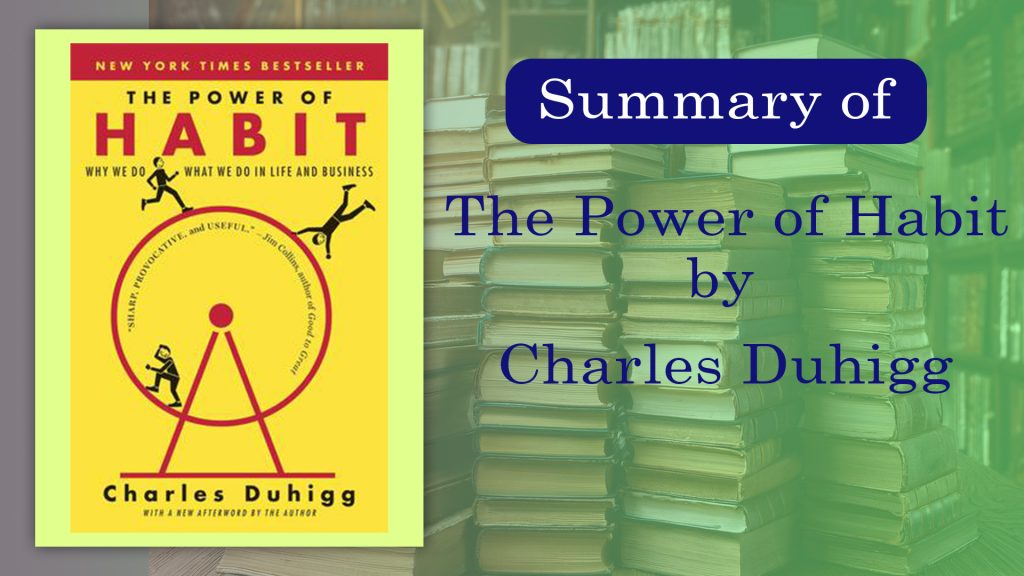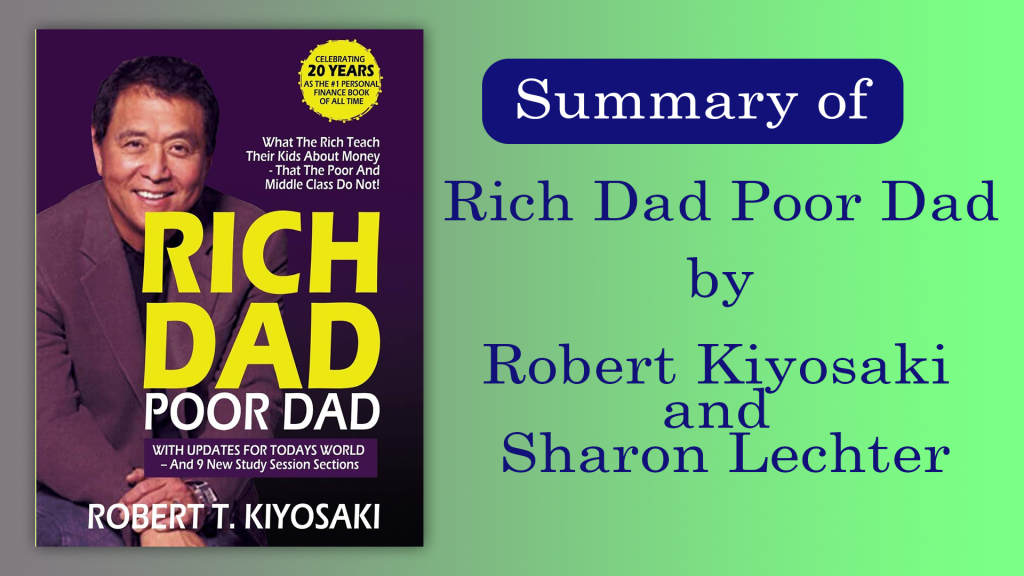Main Topic or Theme of the Book
Charles Duhigg’s “The Power of Habit” dives deep into the science behind our everyday routines. The book reveals how habits are formed, why they stick, and how they can be transformed. Through a blend of scientific research and real-world examples, Duhigg shows us that by understanding the mechanics of habits, we can reshape our lives, boost productivity, and even influence society.

Key Concepts and Ideas in “The Power of Habit”
- The Habit Loop: Duhigg introduces the idea of the “habit loop,” a simple framework consisting of three elements: the cue, the routine, and the reward. This loop is at the heart of every habit, good or bad.
- Keystone Habits: Some habits have the power to create a ripple effect, leading to positive changes in multiple areas. Duhigg calls these “keystone habits.”
- Willpower as a Habit: The book highlights that willpower itself can be strengthened and turned into a habit, leading to better self-control and success.
- Habits in Organizations and Society: Duhigg extends the concept of habits beyond individuals, showing how they operate within organizations and drive societal change.
Breakdown of the Book’s Key Sections
1. The Habit Loop: How Habits Work
In this foundational chapter, Duhigg explains the habit loop—cue, routine, and reward—and how it governs our behavior. He illustrates this with fascinating case studies, such as how a patient with memory loss still maintains habits.
2. The Craving Brain: How to Create New Habits
This section delves into the role of cravings in habit formation. Duhigg explains how businesses tap into these cravings to create consumer habits and how we can leverage the same cravings to build new, healthier habits.
3. The Golden Rule of Habit Change: Why Transformation Occurs
Duhigg introduces the “golden rule” of habit change: keep the cue and reward the same, but change the routine. He shares stories of people and organizations that have successfully applied this rule to break bad habits and adopt new ones.
4. Keystone Habits, or The Ballad of Paul O’Neill: Which Habits Matter Most
Focusing on “keystone habits,” Duhigg demonstrates how certain habits can trigger a cascade of positive outcomes. For example, he discusses how former Alcoa CEO Paul O’Neill used a focus on safety to drive a broader cultural transformation within the company.
5. Starbucks and the Habit of Success: When Willpower Becomes Automatic
Willpower is a central theme here. Duhigg uses Starbucks as a case study to show how training employees in willpower led to improved customer service and higher job satisfaction.
6. The Power of a Crisis: How Leaders Create Habits Through Accident and Design
This chapter examines how crises can be catalysts for habit change within organizations. Duhigg highlights how leaders can use these moments to instill new habits that drive long-term success.
7. How Target Knows What You Want Before You Do: When Companies Predict (and Manipulate) Habits
Duhigg explores how companies, like Target, use data to predict and shape consumer habits. This section is a fascinating look at the intersection of habits and big data.
8. Saddleback Church and the Montgomery Bus Boycott: How Movements Happen
This chapter shifts to societal habits, exploring how social movements, such as the Montgomery Bus Boycott, are driven by collective habits and the power of social networks.
9. The Neurology of Free Will: Are We Responsible for Our Habits?
The book concludes with a thought-provoking discussion on the neuroscience of habits and the extent to which we control them. Duhigg raises important questions about responsibility and free will.
Major Takeaways from “The Power of Habit”
- Habits shape our lives more than we realize. By understanding the habit loop, we can take control of our habits and, in turn, our lives.
- Keystone habits are game-changers. Focusing on key habits can lead to transformative changes across various aspects of life.
- Willpower is a skill. It can be developed and reinforced, leading to greater success in personal and professional endeavors.
- Habits aren’t just personal; they influence organizations and societies. Understanding this broader impact can help leaders drive positive change.
About Charles Duhigg: The Man Behind the Book
Charles Duhigg is an award-winning journalist and author known for his work on the science of productivity and habits. He won the Pulitzer Prize for his work with The New York Times and has a reputation for making complex topics accessible to a broad audience. Duhigg’s expertise in investigative journalism and his deep dive into psychological research make him a trusted authority on the topic of habits.
Comparing “The Power of Habit” with Other Books
- “Atomic Habits” by James Clear: Clear’s book offers a more step-by-step guide to habit formation, making it a practical companion to Duhigg’s more research-oriented approach.
- “Mindset” by Carol S. Dweck: Dweck’s exploration of fixed and growth mindsets complements Duhigg’s discussion on the potential for habit change.
- “Switch” by Chip Heath and Dan Heath: This book focuses on how to implement change in difficult situations, similar to Duhigg’s examination of habits in organizations.
Who Should Read “The Power of Habit”?
This book is perfect for:
- Self-improvement enthusiasts looking to understand and change their habits.
- Business leaders and managers who want to drive organizational change through habits.
- Anyone interested in psychology and the science behind why we do what we do.
Critical Reception of “The Power of Habit”
“The Power of Habit” received widespread acclaim for its insightful and practical take on habit formation. It quickly became a New York Times bestseller and is praised for its engaging storytelling and actionable insights. Critics and readers alike appreciate Duhigg’s ability to translate complex scientific concepts into relatable and actionable advice.
Publication Details
- Publisher: Random House
- First Published: February 28, 2012
Recommended Reads
If you enjoyed “The Power of Habit,” you might also like:
- “Atomic Habits” by James Clear
- “Grit” by Angela Duckworth
- “Switch: How to Change Things When Change Is Hard” by Chip Heath and Dan Heath
- “Thinking, Fast and Slow” by Daniel Kahneman
The Ultimate Takeaway
Understanding and mastering the habit loop is the key to unlocking personal and organizational transformation.


